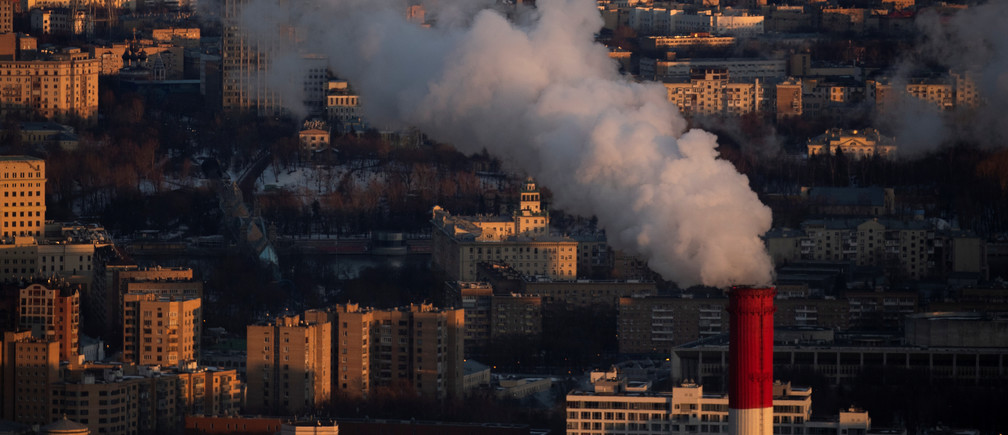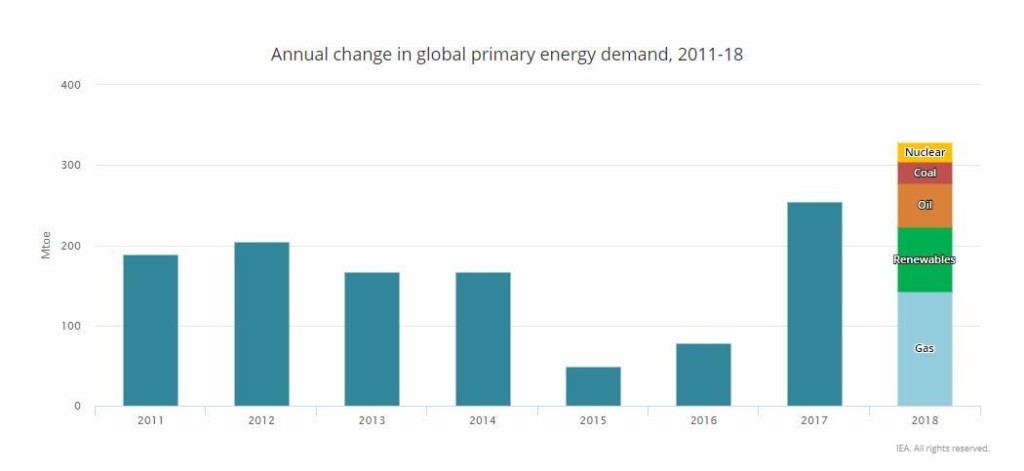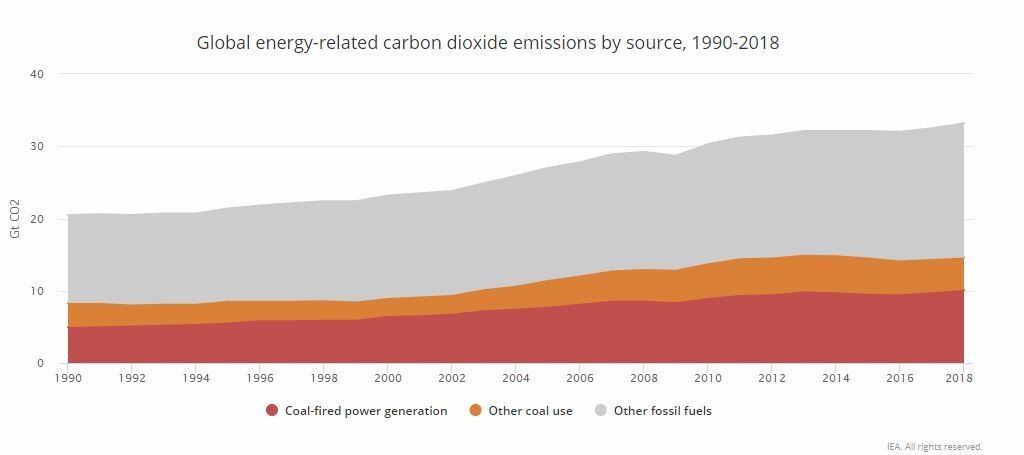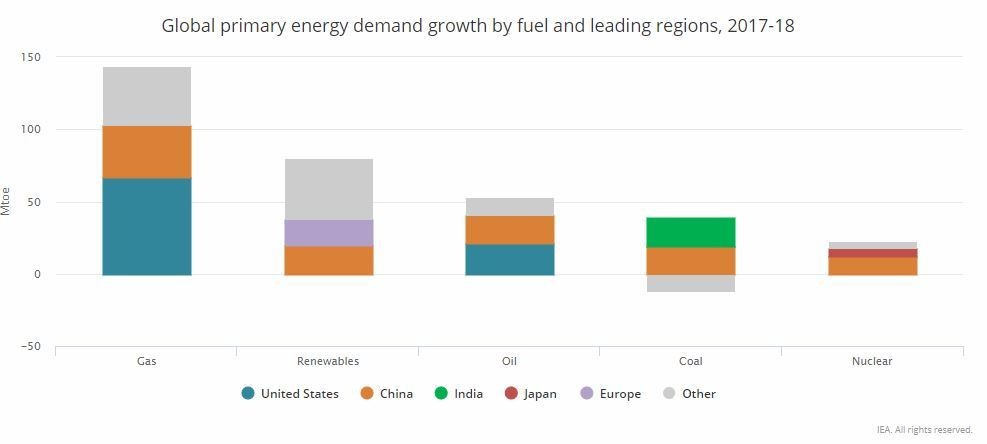A power-hungry world is consuming energy at an ever-faster rate. Mounting demand for heating and cooling combined with a robust world economy meant global energy consumption grew last year at double the average annual rate of the previous seven years.
Although wind and solar saw double-digit growth last year, this was nowhere near enough to meet the increased demand. In all, fossil fuels accounted for almost 70% of growth, for the second year running. As a result, CO2 emissions rose1.7% to the highest level since 2013.
The International Energy Agency (IEA) said the growth in emissions last year was equivalent to the entire output of the aviation industry. It said that coal was now the biggest single source of global warming, accounting for over 0.3C of the 1C increase in global temperatures to date.
The World Economic Forum’s 2019 Fostering Effective Energy Transition Reportsaid the pace of change to clean energy across the world had slowed to the lowest rate for five years with investment in clean energy down by almost 10% last year.
Rising demand
The IEA said demand for all fuels was up last year with electricity generation accounting for more than half of the growth in demand. A fifth of the increase was due to extremes of weather. Hotter summer temperatures were a significant factor in driving demand for extra cooling.
Demand for gas outstripped all other fuels, accounting for 45% of growth in total energy demand. Global gas consumption grew by 4.6%, the fastest rate since 2010 and demand for gas in the US jumped 10%, the biggest increase since IEA records began in 1971.
Renewables output rose by over 4% and now provides a quarter of world power output, second only to coal. Solar, hydropower and wind each accounted for about a third of the growth, with bioenergy making up most of the rest. Renewables powered 45% of the growth in electricity generation in 2018.
Fuel of the future
The IEA says electricity is the “fuel of the future”, with global demand up 4% in 2018 pushing electricity towards a 20% share in total final consumption. Nuclear grew 3.3%, as China brought new capacity online and Japan restarted four reactors. It now meets 7% of world demand.
Coal consumption rose 0.7% and coal was the largest contributor to global emissions growth last year. Increased coal-fired electricity generation in China offset reductions elsewhere in the world. Oil grew 1.3% and oil and coal together accounted for a quarter of global demand growth.
Between them, China, India and the US accounted for 70% of the increase in total world energy demand. China saw the biggest increase in demand. Its energy consumption grew by 3.5%, accounting for a third of global growth, with gas leading as it replaced coal for heating.
Electricity generation accounted for 95% of China’s demand growth as domestic electricity demand rose 8.5%. Despite using more coal, China also achieved the world’s biggest increase in solar and wind generation last year.
After three years of decline, energy demand in the US rose 3.7%, accounting for nearly a quarter of global growth. In India, energy demand rose 4%, accounting for 11% of global growth, the third-largest share. Growth was led by coal for power generation and oil for transport.




